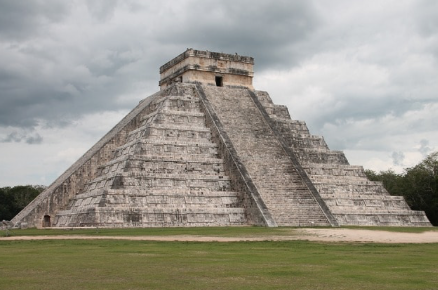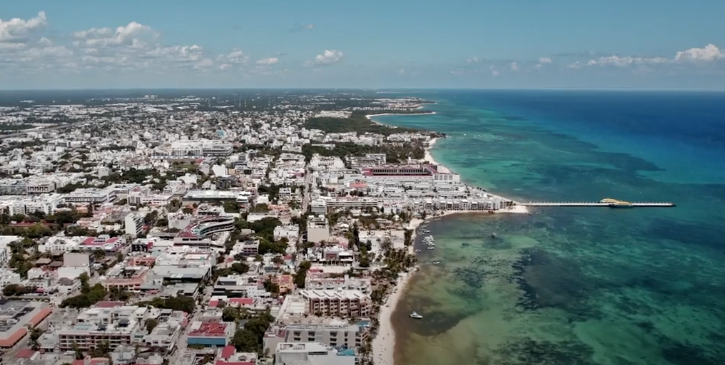Mexico Nearshoring and the Investment Implications

The Future of Nearshoring in Mexico: Challenges, Opportunities, and Economic Integration
As Mexico navigates its path toward becoming a global nearshoring hub, investors face a mix of opportunities and challenges. While the country presents immense potential for foreign investment—especially in sectors like manufacturing, renewable energy, and technology—critical issues such as judicial reform, security, and US-Mexico trade relations are influencing decision-making. With the upcoming review of the USMCA in 2026, the future of economic integration between Mexico and the United States will hinge on collaboration, energy reforms, and competitive strategies in critical industries.
Table of Contents
- Nearshoring: Mexico’s Golden Opportunity
- Risks for Investors: Judicial Reform, Security, and Uncertainty
- The USMCA Review in 2026: What’s at Stake?
- Mexico’s Energy Ambitions: Challenges and Investment Needs
- The Role of Private Capital in Mexico’s Economic Future
- Impact on Real Estate Investment in the Riviera Maya
- Tesla and the Future of Manufacturing in Mexico
- How US-Mexico Integration Can Shape Global Trade
Nearshoring: Mexico’s Golden Opportunity
As the global economy shifts away from dependence on Asia, Mexico is emerging as a promising nearshoring destination. With its proximity to the U.S., trade agreements like the USMCA, and a strong manufacturing base, the country is positioned to attract companies looking to diversify supply chains. Shannon O'Neal, Senior Vice President of the Council on Foreign Relations, highlights the opportunities this shift presents but also warns of underlying risks for investors.
Risks for Investors: Judicial Reform, Security, and Uncertainty
One major concern is judicial reform, which involves electing judges in Mexico. Investors fear that this change could lead to judicial influence by the government, raising concerns about fair rulings in business disputes. Another pressing issue is security. Despite hopes for improvement, violence has continued under the current administration, with homicide rates, extortion, and embezzlement remaining alarmingly high. For investors, uncertainty—both politically and economically—remains a significant obstacle.
The USMCA Review in 2026: What’s at Stake?
A critical factor influencing Mexico's future as a nearshoring destination is the upcoming USMCA review in 2026. Marcelo Ebrard, Mexico's new Minister of the Economy, who previously served as Mexico City’s mayor and Foreign Minister, played a key role in negotiating the original agreement. He stresses that the USMCA has been immensely beneficial for Mexico, noting the deep economic ties between the U.S. and Mexico. However, he anticipates challenging negotiations, especially given the political climate in both countries and the looming presence of China in global supply chains.
Key concern for the review:
- How will China's role in North American supply chains be addressed?
- What industries will become focal points for protection and industrial policy?
Mexico’s Energy Ambitions: Challenges and Investment Needs
Mexico has ambitious goals to increase its share of renewable energy to 45% by 2030, but this cannot be achieved without significant private capital investment. Ebrard acknowledges the pressing need for private sector participation in both power generation and distribution, areas that require immense infrastructure investment to support future growth.
Ebrard is clear that private markets are viewed as essential partners in this process. His administration aims to cut back on bureaucratic red tape to facilitate investment and accelerate development in the energy sector.
The Role of Private Capital in Mexico’s Economic Future
Attracting foreign investors is key to Mexico's economic future. Ebrard emphasizes that the government seeks to foster a strong relationship with private capital and reduce the complex web of regulations that currently impede business operations. The Shane Baum administration, backed by majorities in both chambers of Congress, has the political leverage to make these changes and is determined to cut unnecessary regulations to spur economic growth.
Impact on Real Estate Investment in the Riviera Maya
-
Riviera Maya as a Growing Hub: Nearshoring efforts are increasing the appeal of regions beyond industrial zones, with destinations like the Riviera Maya benefiting from growing interest in residential and commercial properties.
-
Demand for Infrastructure: As foreign companies invest in Mexico, the demand for high-quality infrastructure, housing, and commercial real estate rises, which could further drive real estate development in the Riviera Maya.
-
Work-from-Anywhere Lifestyle: With increased economic activity in Mexico, professionals may choose to live in desirable areas like Tulum or Playa del Carmen, boosting demand for vacation homes, rental properties, and long-term residential investments.
-
Potential for Luxury Market Expansion: Increased private capital in energy and infrastructure could elevate luxury developments in regions like the Riviera Maya, attracting both high-net-worth individuals and foreign investors.
Tesla and the Future of Manufacturing in Mexico
One notable example of the opportunities and challenges Mexico faces in attracting foreign investment is the Tesla plant deal. While Ebrard remains optimistic that Tesla will eventually build in Mexico, the project has been put on hold, with Elon Musk expected to make a final decision by December.
Lessons from the Tesla experience:
- Building trust and maintaining close relationships with CEOs is critical to securing foreign investment.
- Timely communication and clarity about the investment landscape are essential to attract and retain investors like Tesla.
How US-Mexico Integration Can Shape Global Trade
The upcoming USMCA review presents an opportunity for Mexico, the U.S., and Canada to devise a plan for competing globally in critical industries such as semiconductors, aerospace, electric vehicles, and rare earth minerals. Ebrard believes that beyond free trade, the three countries must focus on creating a common industrial policy to strengthen North American competitiveness.
Key areas of focus for economic integration:
- Microchips
- Pharmaceuticals
- Medical equipment
- Green technologies
Ebrard sees the future of Mexico's economic integration with the U.S. as vital to the country’s ability to increase its share of North American imports, potentially driving significant economic transformation over the next decade.
Conclusion: Building Mexico's Future through Nearshoring and Integration
Mexico's potential as a nearshoring hub is vast, but its success will depend on the country's ability to address key challenges—judicial reform, security, energy infrastructure, and bureaucratic inefficiencies. As both public and private sectors work to overcome these hurdles, the upcoming USMCA review in 2026 will be a pivotal moment in determining the future of Mexico's economic integration with North America.
For investors, while opportunities are abundant, navigating the current landscape requires careful consideration of the risks ahead. However, with continued investment in infrastructure and energy, Mexico could position itself as a key player in the global economy, transforming its role in North American supply chains.
This article summarizes the insights from a recent Bloomberg podcast featuring interviews with Marcelo Ebrard and Shannon O'Neal, offering a comprehensive look at the evolving landscape of nearshoring and investment in Mexico.











Comments (0)